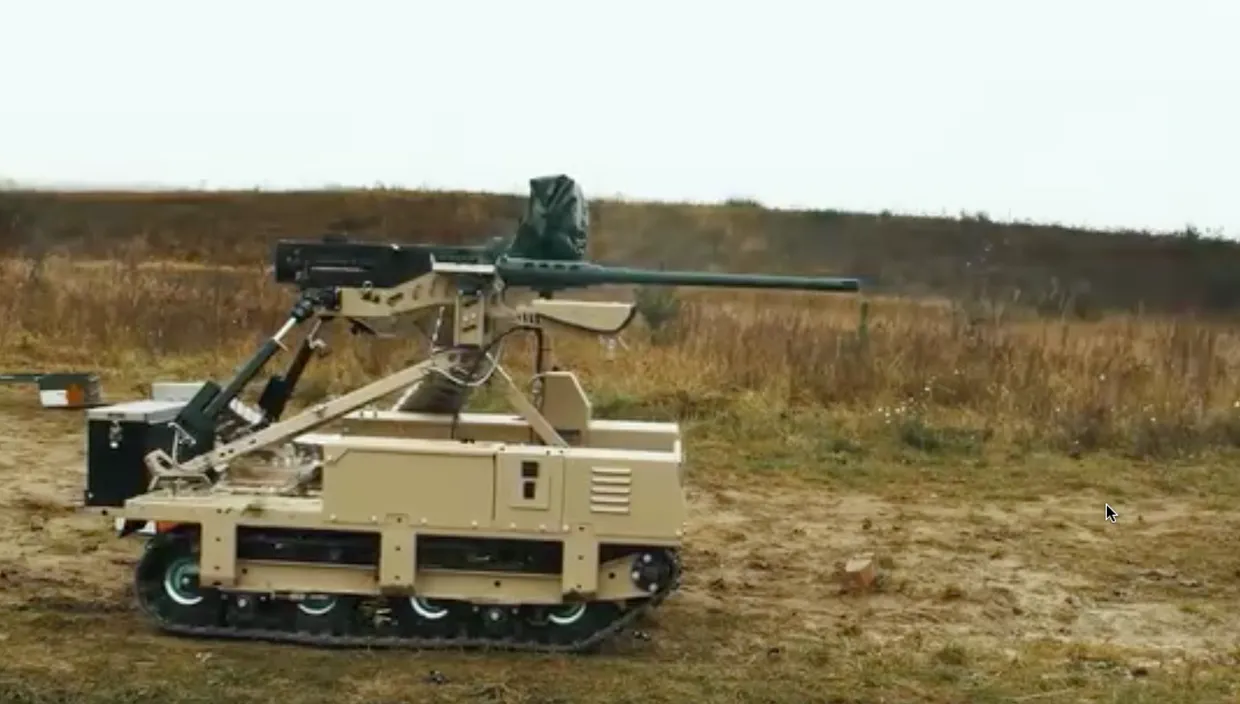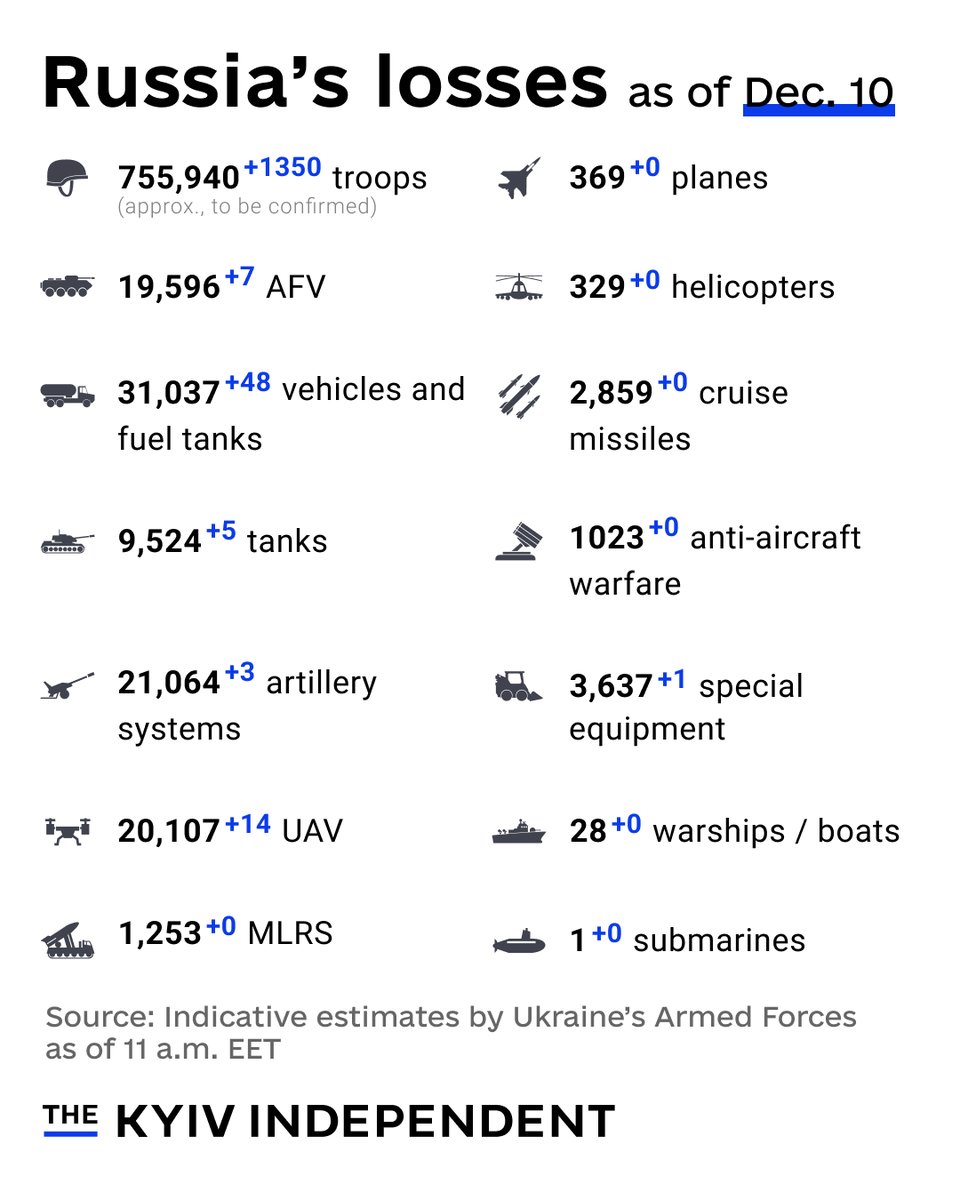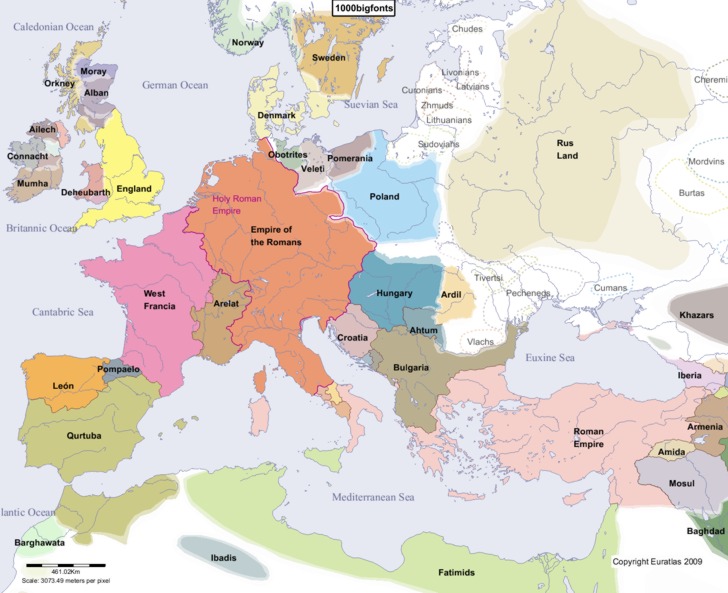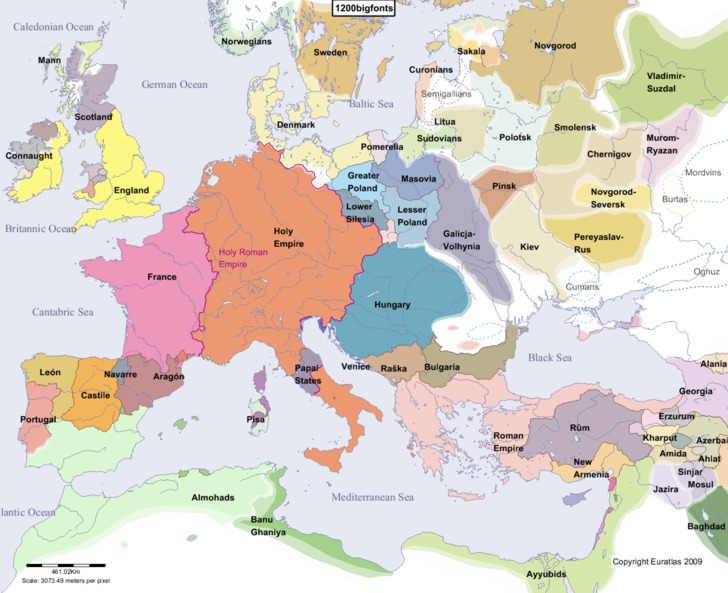Posted on 02/24/2024 5:59:01 AM PST by SpeedyInTexas
This list only includes destroyed vehicles and equipment of which photo or videographic evidence is available. Therefore, the amount of equipment destroyed is significantly higher than recorded here. Loitering munitions, drones used as unmanned bait, civilian vehicles and derelict equipment are not included in this list. All possible effort has gone into avoiding duplicate entries and discerning the status of equipment between captured or abandoned. Many of the entries listed as 'abandoned' will likely end up captured or destroyed. Similarly, some of the captured equipment might be destroyed if it can't be recovered. When a vehicle is captured and then lost in service with its new owners, it is only added as a loss of the original operator to avoid double listings. When the origin of a piece of equipment can't be established, it's not included in the list. The Soviet flag is used when the equipment in question was produced prior to 1991. This list is constantly updated as additional footage becomes available.
(Excerpt) Read more at oryxspioenkop.com ...
“Regarding the crash of the airplane itself, it was reported the plane has not yet been found”
The plane may have been making an evasive maneuver, suddenly diving below the radar coverage to fly out at Nap Of the Earth low altitude, rather than crashing.
I had to laugh when I saw this video from Scott Ritter (the convicted pedophile) claiming that the Syrian rebels had failed, and were being crushed by Assad and Putin forces.
“This operation is doomed to fail...once the Russians and the Syrians get their air ground coordination together it’s going to be hell on earth for these people. They’re going to get blown away.”
- Scott Ritter, 3 Dec 2024
It’s actually much worse than this quote suggests.
https://x.com/JamesLLandis/status/1865989400091607211
Ritter is even more frequently wrong than Douglas Macgregor, and that’s a difficult feat.
“Ritter is even more frequently wrong than Douglas Macgregor”
...But at least he is cocksure about it. That adds more entertainment value.

(Candygram! Candygram for Private Ivan Vatnik!)
"The Defense Ministry has approved the new Droid TW 12.7 robotics complex, used on a tracked platform with a Browning 12.7 mm machine gun, for combat operations, the ministry announced on Dec. 9. The system was approved after performing reliably in combat testing, the ministry said."
The Kremlin continues to cautiously signal that it can ensure the security of Russian military bases in Syria in the short-term but notably has expressed uncertainty about the long-term future of the military bases against the backdrop of the volatile and rapidly evolving political situation in Syria. Kremlin Spokesperson Dmitry Peskov stated on December 9 that the Russian military is taking all necessary precautions to ensure the security of Russian military bases in Syria and that Russia is “doing everything possible” to establish contact with those who can ensure the safety of Russian military personnel in Syria.[1] Peskov noted that the Kremlin will host “serious discussions” with the future Syrian authorities about Russia's military bases in Khmeimim and Tartus at an unspecified future date but noted that it is currently too early to discuss maintaining these bases since such a discussion involves “those who will lead Syria.”[2] Kremlin newswire TASS reported on December 9, citing an unspecified source in Latakia Governorate, that Syrian opposition forces have full control over Latakia Governorate and Tartus City, but that Syrian opposition forces have not and do not intend to “invade” the Russian Khmeimim Air Base near Latakia City and the naval base at the Port of Tartus.[3] The source added that both Russian bases are functioning normally. Russian state outlet RBK reported on December 9 that the Syrian National Coordination Committee's Foreign Relations Head Ahmed al Asrawi stated during a discussion about Russia's military bases in Syria that Syria would continue to uphold agreements that are in Syria's interest and would “never” take a hostile position toward Russia or any other friendly country.[4] Russian milbloggers continued to debate the future of the Russian bases in Syria on December 8 and 9, expressing uncertainty about whether Russian forces will be able to maintain their presence in the country or will have to conduct a full evacuation.[5] The Critical Threats Project (CTP) continues to assess that [6]
Russia has removed some vessels from the Port of Tartus to a nearby area offshore. Satellite imagery taken on December 9 shows that all Russian ships and submarines have left the Port of Tartus.[7] OSINT analyst MT Anderson reported that satellite imagery taken on December 9 also shows that Russian vessels — likely the Admiral Gorshkov Gorskhov-class frigate, Admiral Grigorovich Grigorovich-class frigate, Novorossiysk Kilo-class submarine, and Vyazma Kaliningradneft-class oiler – are in a holding pattern in the roadstead about eight kilometers west of the port.[8] The location of the other ships that were reportedly previously docked in the Port of Tartus, including the Admiral Golovko Gorskhov-class frigates and the Yelnya Altay-class oiler, is unclear.[9] Syrian opposition leaders reportedly guaranteed on December 8 the security of Russian military institutions in Syria, and Syrian Prime Minister Mohammad Ghazi al Jalali stated on December 8 that the new Syrian authorities would make the decisions about the future of Russia's military bases in Syria.[10] The current and future security of the Russian military bases in Syria remains unclear as Moscow continues to hold talks with the new Syrian authorities, and it is also unclear at this time if Russia is removing the vessels from the Port of Tartus as part of a wider evacuation or to better protect these military assets.
Russia continues to face staggering costs required to maintain its war effort against Ukraine, with mounting economic strain, labor shortages, and systemic corruption threatening the sustainability of the Russian defense industrial base (DIB). US Defense Secretary Lloyd Austin reported on December 7 that Russia has spent over $200 billion on its war in Ukraine and suffered at least 700,000 casualties since February 2022, with recent losses averaging 1,000 soldiers per day.[13] The Ukrainian Center for Countering Disinformation reported on December 9 that Russia's liquid assets in its National Welfare Fund dropped from $140 billion in February 2022 to $53.8 billion by December 1, 2024.[14] The Center noted that Russia increasingly relies on Chinese yuan reserves and gold sales to cover its budget deficit and is committing a third of its national budget for 2025-2027 to defense spending, indicating an unsustainable prioritization of the war at the expense of economic stability.[15] Russian Prosecutor General Igor Krasnov claimed on December 9 that corruption crimes, including bribery, increased by nearly 30 percent in 2024 over 2023, with Russian authorities having disciplined over 30,000 Russian officials for corruption violations in 2024.[16] Russia's mounting economic pressures stemming from the war, paired with widespread corruption, labor shortages, and inefficiencies in Russia's DIB, will likely compound the cost of Russia's war and further undermine its ability to effectively sustain DIB operations while maintaining economic stability. ISW has previously observed reports of similar trends and statistics in the Russian economy, indicating that Russia's economic trajectory is unsustainable in the mid- to long-term and will increasingly strain its capacity to wage war against Ukraine.[17]
https://www.understandingwar.org/backgrounder/russian-offensive-campaign-assessment-december-9-2024

“There are increasing cases of sabotage among Russian soldiers to avoid being sent to storm the islands in the Dnipro delta,” Atesh said on their Telegram channel. The statement comes as Russian forces have reportedly amassed some 300 boats aiming to cross the Dnipro and take strategically important islands on the river. The statement comes as Russian forces have reportedly amassed some 300 boats aiming to cross the Dnipro and take strategically important islands on the river. From their positions on the east bank, Russian forces have been shelling the city of Kherson and the surrounding villages, killing civilians in attacks that continue to this day. “Soldiers deliberately break engines, puncture rubber boats, and even transmit coordinates to the Ukrainian Defense Forces about the location of boat bases and fuel supplies,” the group claimed. An expert told the Kyiv Independent earlier that Russia is sending small units to storm the Dnipro islands and force Ukrainian defenders to use more shells, straining Ukraine's resources.
Reports: Israeli tanks are about 20 km from Damascus (Syria)
https://freerepublic.com/focus/f-news/4283546/posts
Hes he is but
Reports: Israeli tanks are about 20 km from Damascus (Syria)
https://freerepublic.com/focus/f-news/4283546/posts
Just another question to be answered. With AI who know what is real anymore. After what Russia and Assad did to the forces now “in charge “ of Syria, if an agreement is made with Russia to maintain bases then we will know that money still rules all😎
Tobruk, one of my favorite historical battle areas. IMHO, one of hitlers biggest blunders after Dunkirk was not seizing the initiative in North Africa and Malta.
With a relatively small contingent of British forces(30,000) in Egypt in 1940 along with the somewhat useful Italian forces in Tobruk Germany could have taken Egypt and Suez Canal. Additionally Malta which was far more important than Cyprus was nearly undefended. I realize this would have been a heavy lift for Germany as its forces were exhausted after taking France, but an early securing of Germany’s southern flank and defeat of British forces could have lead to some serious changes in history
One of the more interesting alt history scenarios is Germans take Dunkirk and trap British and French Troops resulting in their surrender. Followed by taking of Malta and North Africa resulting in a no confidence vote of British govt in Churchill and a peace agreement with Germany
I know if my aunt had balls she would be my uncle er ah nevermind 😎

As late as 1200 AD, Kiev still governed an independent country.

In 1240 Kiev was sacked & destroyed by Mongols, becoming part of the Western Golden Horde - Kipchak -- then later absorbed by Lithuania.

Ukraine next became independent from 1917-1922.
1918 New York Times article:

Jake Broe can drive me nuts with his anti-Trump nonsense, but in this case he is spot-on.
Russian threats against its neighbors did not begin in 2000 with Vlad the Invader.
They began almost immediately after the Old USSR collapsed in 1991:
Russian threats & military actions against neighbors since 1991:
Preparing for the Dissolution of the Russian Federation
14FEB2023
1. Preparing for every possibility of what the Russian Federation could look like at the end of its full-scale invasion of Ukraine, whenever it may end, is not synonymous with calling for regime change. It is prudent for US and allied policymakers to have an awareness of the different social and ethnic dynamics within the Russian Federation and the potential cracks that may erupt.
2. Unlike the fall of the Soviet Union, when scholars and policymakers knew what the resulting 15 states would look like, it is unknowable which, and how many, ethnic groups in Russia may seek independence, let alone when. But it is almost certain that these ruptures will not align perfectly along the oblasts and republics depicted on the map today.
3. The first step in mitigating the effects of this potential dissolution is for US and allied policymakers to show up in the region as well as in friendly countries throughout the Caucasus and Central Asia. It will also require working with sometimes difficult allies like Turkey to ensure that China does not fill the power vaccum left on the Eurasian landmass.
While it is unknown when Russia’s full-scale invasion of Ukraine will end, a Russian defeat would likely lead to the dissolution of the Russian Federation as it is known today. Because of the Kremlin’s decision to attack Ukraine, Moscow’s once extensive influence across Eurasia has dwindled, and the war has devastated Russia’s economy, military, and social stability. US and allied policymakers need to understand this possibility and prepare for the new Eurasian geopolitical reality that a fall of the Russian Federation might bring.
Join Hudson Institute and The Jamestown Foundation to discuss Russian domestic social friction and what US and allied policymakers need to do now to prepare for the country’s possible collapse.
Agenda:
9:00 a.m. | Keynote Speech
Alexii Goncharenko, Ukrainian Member of Parliament
9:30 a.m. | Panel 1: Ethnic and Social Fault Lines in the Russian Federation
Panelists:
Janusz Bugajski, Senior Fellow, Jamestown Foundation
Paul Goble, Senior Analyst, Jamestown Foundation
Natalia Arno, President, Free Russia Foundation
Inal Sherip, Foreign Minister of the Chechen Republic of Ichkeria
Moderator: Glen Howard, President, Jamestown Foundation
11:00 a.m. | Panel 2: What Can Be Done to Prepare for the Collapse of the Russian Federation?
Panelists:
Luke Coffey, Senior Fellow, Hudson Institute
Fred Starr, Founding Chairman, Central Asia-Caucasus Institute and Silk Road Studies Program
Ambassador Temuri Yacobishvili, Former Ambassador of Georgia to the US
Moderator:
Peter Rough, Senior Fellow and Director of the Center on Europe and Eurasia, Hudson Institute
Related Events
https://www.hudson.org/events/preparing-dissolution-russian-federation
Window on Eurasia - Paul Goble
https://windowoneurasia2.blogspot.com/
Staunton, Dec. 6 – Putin has enough resources to continue his war in Ukraine for a long time and certainly doesn't want a truce with Kyiv, Sergey Shelin says; “but he might agree to one” because the war is costing more than he expected, his imperialism is increasingly at odds with the nationalism of the Russian people, and the population itself is tired of war. But any agreement the Kremlin leader might make about Ukraine would be no more than a breathing space, allowing him time to gather his forces, and likely guaranteeing that he would restart the conflict when he felt he was in a better position to win it as quickly as he expected in 2022
( https://www.moscowtimes.ru/2024/12/06/putin-peremiriya-ne-hochet-no-poiti-na-nego-mozhet-tri-prichini-a149786 )
The costs, human and financial, of the war in Ukraine have been far greater than Putin expected or than the Russian people are comfortable with. Moreover, his imperialist approach is increasingly at odds with the nationalism of the Russian people who want to see investments in themselves and with the attitudes of the population that is increasingly tired of the conflict. Consequently, Putin, who doesn't want to have to work hard to continue his current policy, is “now quite capable of searching for a middle ground between war and peace and could, as a last resort, even sign some kind of agreement to restore his strength and sometime, if everything works out, start again doing” what it might appear he has promised not do.
In short, Putin might agree to a truce, Shelin concludes; but there is no possibility that he will agree to anything like a peace.
https://windowoneurasia2.blogspot.com/2024/12/putin-doesnt-want-truce-in-ukraine-but.html
https://x.com/ConnieLingus123/status/1866462379246305738
video
And Moscovia became Russia when Peter the Great appropriated the name Rus for his country, hoping to make every one think it was as great as the old Kivian-Ru’ (Ukraine) empire. The trickery persists to this day.
Reporting From Ukraine:
https://www.youtube.com/@RFU/videos
Reporting From Ukraine Uncensored Combat Footage (from this and past Reports) is found on Telegram:
https://t.me/RFUEnglish or @RFUEnglish
[ You need to have the Telegram app to view the larger videos. ]
The complete transcript.
—
[ Ukrainians Hack Russian Radio, Find & Destroy The Base! ]
—
Today [ Dec 08, 9 pm ], there are a lot of updates from the Kursk direction.
Here, after repelling a Russian assault, Ukrainian forces seized an opportunity to outwit their adversaries by using captured communications to report the position as secured to Russian command. Falling for the ruse, Russian commanders dispatched a large reinforcement unit, only for it to be ambushed and annihilated in a meticulously planned Ukrainian trap.
Previously, Russian forces recently intensified their offensive operations near Nizhny Klin, aiming to secure strategic high ground for a potential assault on Sudzha along the main highway. Despite their determined efforts, these attacks resulted in heavy losses and no territorial gains.
Russian commanders, interpreting this outcome, assumed that Ukrainian forces had reinforced Nizhny Klin by redeploying troops from other sectors along the Kursk front, viewing it as a critical defensive stronghold.
Operating under this assumption, Russian officers shifted their focus to Pogrebki, a relatively less active sector, launching new attacks in hopes of exploiting a perceived weakness. They believed that tactical gains in Pogrebki and its surrounding forests could provide a foothold for further advances toward Malaya Lokhnya.
However, contrary to Russian assumptions, Ukrainian forces maintained a robust presence in Pogrebki, with their troops meticulously concealed in forests, within the village, and atop the surrounding hills. To counter Russian mechanized attacks, Ukrainians deployed extensive landmine fields, which had successfully repelled numerous assaults in recent weeks.
These mines proved highly effective, destroying lead vehicles and enabling concealed Ukrainian fighters to swiftly neutralize the remaining armored units and stormtroopers.
Acknowledging the unsustainable losses from these mechanized offensives, Russian commanders adapted their approach, deploying smaller infantry groups to infiltrate the tree lines in an effort to bypass the Ukrainian minefields.
However, this tactical shift failed to account for the depth and adaptability of Ukrainian defenses, which continued to inflict significant losses on Russian forces.
These Russian infiltration groups were swiftly identified and engaged by Ukrainian special forces, who successfully retook the lost positions. During the engagement, over a dozen Russian soldiers were captured, providing the Ukrainians with an unexpected opportunity to execute a cunning strategy.
Using flawless Russian accents, the Ukrainian special forces transmitted a false report to the Russian command, claiming that the positions had been captured and secured, without further Ukrainian resistance. Deceived by this ruse, Russian commanders dispatched a larger assault group, complete with multiple armored vehicles and stormtroopers, to reinforce what they believed were friendly-held positions.
Combat footage from the engagement reveals how Ukrainian Special Forces expertly prepared an ambush at the reclaimed Russian positions, concealing themselves in the nearby forest. Armed with AT-4 anti-tank weapons, machine guns, and precision snipers, they awaited the unsuspecting Russian reinforcements.
As the Russian BTR armored vehicles advanced toward the forested area, the Ukrainians sprung their trap, immediately neutralizing 2 of the 3 vehicles with well-placed anti-tank strikes. The surviving BTR quickly retreated from the battlefield, abandoning the stormtroopers it had deployed. Caught in a hail of machine gun fire, the stranded Russian stormtroopers attempted to crawl back through the tall grass to safety.
However, Ukrainian snipers, equipped with thermal imaging devices, swiftly detected their movements and methodically eliminated the retreating troops with pinpoint accuracy. The ambush ended with the near-total destruction of the assault platoon, resetting Russian progress in Pogrebki back to square one.
Overall, the events in Pogrebki illustrate the growing tactical sophistication of Ukrainian forces and the operational disarray plaguing Russian command. By exploiting intelligence from captured soldiers and employing deceptive tactics, Ukrainian Special Forces not only neutralized a significant Russian assault group, but also exposed the inherent vulnerabilities in Russia’s chain of command and battlefield coordination.
This engagement underscores a broader trend: Ukraine’s ability to anticipate, adapt, and decisively counter Russian offensives, systematically eroding their adversary’s momentum while conserving its own strength. Such dynamics not only stall Russian progress, but also demonstrate the widening gap in operational effectiveness between the two sides, reshaping the strategic outlook of the war.
Disclaimer: Opinions posted on Free Republic are those of the individual posters and do not necessarily represent the opinion of Free Republic or its management. All materials posted herein are protected by copyright law and the exemption for fair use of copyrighted works.